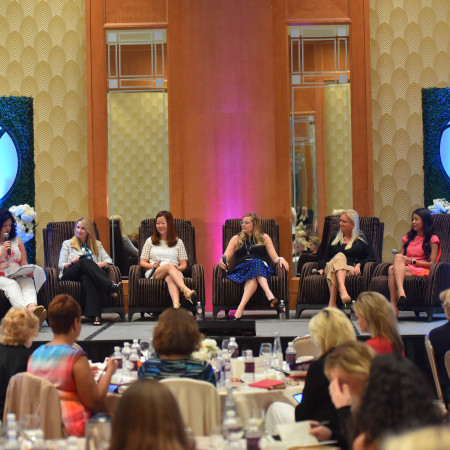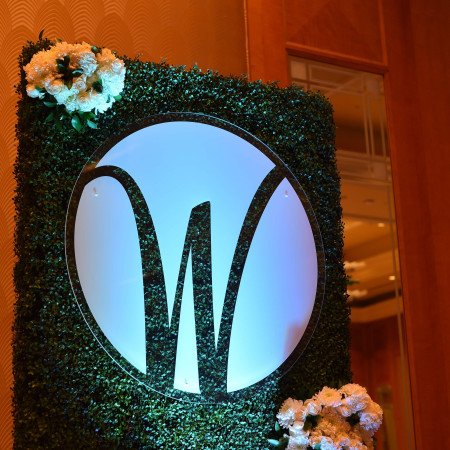As I mentioned in my article last week, we’re super excited about our upcoming Women in Retail Leadership Summit (WIRLS), taking place in Miami on April 20-22. We’ve put together a fabulous speaker lineup, including Jules Pieri, the co-founder and CEO of the product launch platform The Grommet. Jules has had a great career: she’s worked as an industrial designer for technology companies, as a senior executive for large consumer products companies, and as vice president and president at two prior startups. She completed her undergraduate degree at the University of Michigan, and people tell her she’s the first designer to graduate from Harvard Business School, where she’s currently an Entrepreneur in Residence.
Jules was named one of Fortune’s Most Powerful Women Entrepreneurs in 2013 and 2014, and was invited to launch Grommet Wholesale at the first-ever White House Maker Faire. She writes a personal blog at jules.thegrommet.com, and a column named “CEO Unplugged“on Inc.com. She posts as @julespieri on Twitter and Instagram.
At WIRLS, Jules is speaking on a panel called Startups … the Sequel, and will discuss how companies go about transitioning from a startup to a growth-stage company.
Here’s a Q&A the Inner Circle conducted with her recently.
Inner Circle: Tell me about your background. Where are you from and where did you get your entrepreneurial spirit?
Jules Pieri: I grew up in Detroit. My dad was an autoworker. I’m the first person in my family to go to college. From a very young age I discovered that trying new things and taking risks energized me. The most entrepreneurial risk I took was sending myself to boarding school when I was 14. It was absolutely terrifying. But I survived and grabbed every last opportunity that school offered. Every time I took a big risk and prevailed, I developed another drop of confidence. Fast-forward to today: I’m relatively fearless, but that took development.
IC: How did you come up with the idea for The Grommet? Was there a specific moment or experience that spawned the idea?
JP: I first recognized the opportunity when I was working at Playskool and saw that our best ideas never made it to market. This was because the big-box store buyers didn’t buy them and we were losing the independent toy store that had traditionally been the place to find new and innovative toys. That really aggravated me. A decade or so later in 2005, I was president of a social network and I realized the power of community to build support for anything — a candidate, a movie. I decided to build a community-powered platform to level the playing field for independent, fresh products.
IC: What was the most challenging part of starting the company?
JP: Far and away, it was raising capital. We launched a couple weeks after Lehman Brothers collapsed and therein began my four years of walking in the desert, trying to keep Grommet alive. I took our angel investors out way beyond their comfort levels and they were fantastic, but we were always starving.
IC: On the flip side, what was the most gratifying experience?
JP: There are loads of them: having so many of our makers tell us they wouldn’t exist without The Grommet and our community; seeing products we first discovered like Fitbit, Bananagrams, Sugru and SodaStream hit the big time; employing dozens of people; realizing how being an entrepreneur has become a part of my sons’ identities too.
IC: How has The Grommet changed since it started?
JP: Honestly, we’re still working against the same mission as Day One, but the difference is we have massive scale. We now reach one in 50 households in the U.S. daily. That means we can make and move markets for inspired new products.
IC: What’s your leadership style?
JP: I’m steady and thoughtful as a mother and as a leader. In some aspects, those two roles aren’t that different. You’re always trying to form people and have them go where you see they need to be. It takes patience and vision to deal with a three-year-old, and it takes maturity and finesse to get a senior leader to learn new tricks too. But even though I take the long view on our goals, I have urgency about the day-to-day.
IC: You’ve spoken about “keeping the fire in the belly.” How do you do that every day, and how does that help keep the company strong?
JP: I’d be lying if I said that I have the same amount of drive every single day. I can have low periods and doubts like anyone else, but I try to maintain an outward steadiness because when you’re CEO, you’re the energy cell for a lot of people. You don’t have luxury of being in a bad mood. You might, in reality, be crabby because your jeans are tight or your roof is leaking — i.e. nothing to do with the company — but some employee might mistakenly read something very dire about the business from your attitude. However, because I always live a couple years out in terms of steering the ship, I’m truly able to talk myself through the minor skirmishes and stumbles. But I still hate it when my jeans are too tight.
IC: Who are your mentors?
JP: I worked for Meg Whitman in three different companies, so she was my original mentor. True confession: I wish I had a mentor now!
IC: What do you like to do when you’re not working?
JP: Since I started my career as an industrial designer I have a strong need to create. So I bake, garden, try new studio arts like glass blowing, do home renovation projects, and write a blog. I also draw a little daily sketch as a sort of visual journal. I also do a lot of yoga and walk many, many miles every week. I find that the repetition of walking or hiking is essential to my emotional balance and I love being outside. I’ve never, ever gotten used to being in an office all day. It makes me a bit crazy.
IC: Do you have a quote or mantra that you live by?
JP: “It is better to ask forgiveness than permission,” Admiral Grace Hopper.




